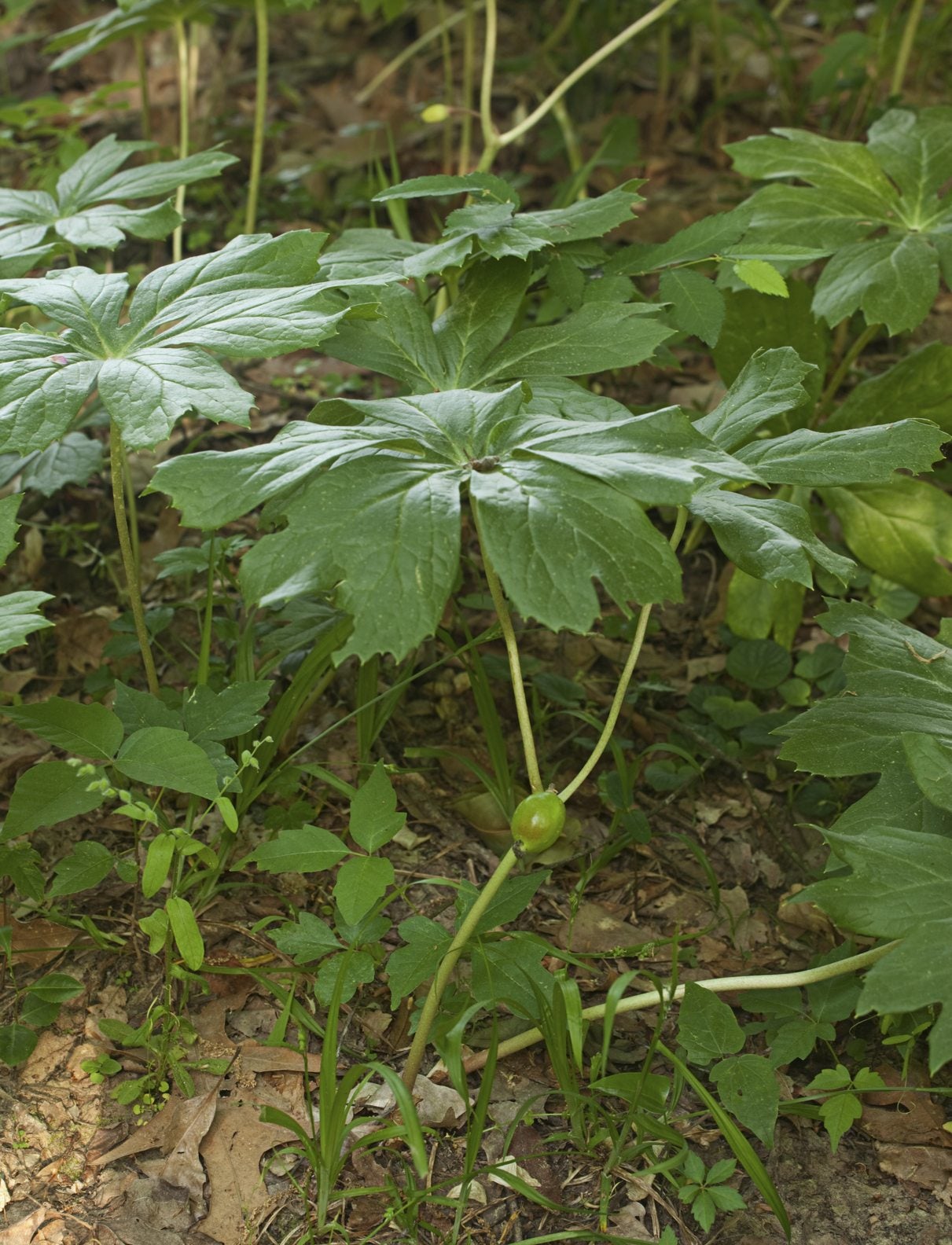Mayapple Wildflowers: Can You Grow Mayapple Plants In Gardens


Mayapple wildflowers (Podophyllum peltatum) are unique, fruit-bearing plants that grow primarily in woodlands where they frequently form a thick carpet of bright green foliage. Mayapple plants are sometimes found in open fields as well. If you live in USDA plant hardiness zones 4 through 8, you may be able to grow mayapple in your own garden. Read on to learn more about mayapple growing conditions.
Mayapple Plant Information
Mayapple plants in gardens are grown primarily for their deeply cut, umbrella-like leaves. The blooming period is short, lasting only two to three weeks in mid to late spring. The flowers, which resemble apple blossoms and typically appear in May (hence the name), aren’t usually numerous, and although they are attractive in their own right, they are usually hidden under the big, showy leaves. The low-growing foliage remains attractive until it dies down in late summer.
Mayapple Growing Conditions
Mayapple wildflowers are difficult to grow from seeds, but the rhizomes are easily established. This is a good time to mention that, like many rhizomatic plants, mayapple can be somewhat aggressive in certain conditions. Mayapples thrive in dry, semi-shady conditions. Consider planting mayapple wildflowers under the dappled light provided by pines or other deciduous trees. They work well in woodland gardens.
Can You Eat a Mayapple?
Mayapple roots, leaves, and seeds are highly toxic when eaten in large quantities. The leaves, which are extremely bitter, are even left alone by grazing wildlife. Unripe mayapple fruit is mildly toxic and eating it may leave you with a regrettable bellyache. It’s definitely a good idea to leave unripe mayapple fruit alone – at least until it ripens. Ripe mayapple fruit – the size of a small lemon – on the other hand, is often incorporated into jellies, preserves, or punch. Don’t overdo it though, as even ripe fruit may have some lingering effects on sensitive tummies. How to tell if mayapple fruit is ripe? Ripe mayapple fruits are soft and yellow, while unripe mayapples are firm and greenish. The fruits are generally ripe in mid-July or August. One source says the ripe fruit is somewhat bland with a melon-like texture, while another says the flavor is “indescribably exotic.” You can make up your own mind about the merits of ripe mayapple fruit, though do so with extreme caution.
Gardening tips, videos, info and more delivered right to your inbox!
Sign up for the Gardening Know How newsletter today and receive a free copy of our e-book "How to Grow Delicious Tomatoes".

A Credentialed Garden Writer, Mary H. Dyer was with Gardening Know How in the very beginning, publishing articles as early as 2007.
-
 Looking For Plants To Give You The Soft And Fuzzies? Try These 5 Fuzzy Leaf Plant Options
Looking For Plants To Give You The Soft And Fuzzies? Try These 5 Fuzzy Leaf Plant OptionsLovers of texture, drama, silver foliage and tactile plants will adore these special sensory garden additions. These fuzzy leaf plant options will leave you all aglow
By Susan Albert
-
 Get Ready For A Summer Of Hummers! Grow These Full Sun Hummingbird Plants and Flowers
Get Ready For A Summer Of Hummers! Grow These Full Sun Hummingbird Plants and FlowersIf you’re lucky enough to enjoy a sunny backyard, make sure you are maxing out on your pollinator opportunities and grow these full sun hummingbird plants and flowers
By Tonya Barnett